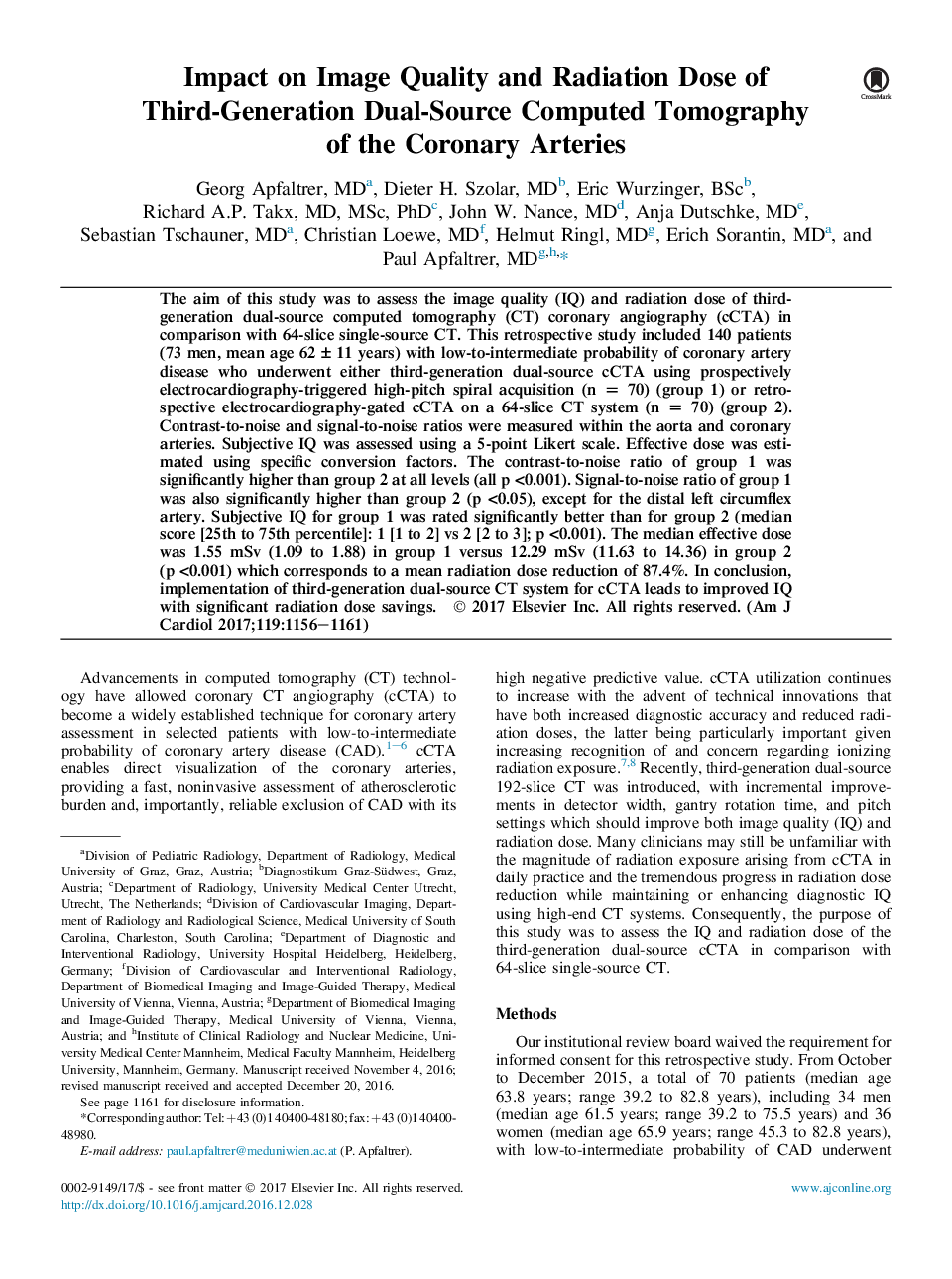| Article ID | Journal | Published Year | Pages | File Type |
|---|---|---|---|---|
| 5594968 | The American Journal of Cardiology | 2017 | 6 Pages |
The aim of this study was to assess the image quality (IQ) and radiation dose of third-generation dual-source computed tomography (CT) coronary angiography (cCTA) in comparison with 64-slice single-source CT. This retrospective study included 140 patients (73 men, mean age 62 ± 11 years) with low-to-intermediate probability of coronary artery disease who underwent either third-generation dual-source cCTA using prospectively electrocardiography-triggered high-pitch spiral acquisition (n = 70) (group 1) or retrospective electrocardiography-gated cCTA on a 64-slice CT system (n = 70) (group 2). Contrast-to-noise and signal-to-noise ratios were measured within the aorta and coronary arteries. Subjective IQ was assessed using a 5-point Likert scale. Effective dose was estimated using specific conversion factors. The contrast-to-noise ratio of group 1 was significantly higher than group 2 at all levels (all p <0.001). Signal-to-noise ratio of group 1 was also significantly higher than group 2 (p <0.05), except for the distal left circumflex artery. Subjective IQ for group 1 was rated significantly better than for group 2 (median score [25th to 75th percentile]: 1 [1 to 2] vs 2 [2 to 3]; p <0.001). The median effective dose was 1.55 mSv (1.09 to 1.88) in group 1 versus 12.29 mSv (11.63 to 14.36) in group 2 (p <0.001) which corresponds to a mean radiation dose reduction of 87.4%. In conclusion, implementation of third-generation dual-source CT system for cCTA leads to improved IQ with significant radiation dose savings.
